Balkinization
an unanticipated consequence of
Jack M. Balkin
Balkinization Symposiums: A Continuing List
E-mail:
Jack Balkin:
jackbalkin at yahoo.com
Bruce Ackerman
bruce.ackerman at yale.edu
Ian Ayres
ian.ayres at yale.edu
Corey Brettschneider
corey_brettschneider at brown.edu
Mary Dudziak
mary.l.dudziak at emory.edu
Joey Fishkin
joey.fishkin at gmail.com
Heather Gerken heather.gerken at yale.edu
Abbe Gluck abbe.gluck at yale.edu
Mark Graber
mgraber at law.umaryland.edu
Stephen Griffin
sgriffin at tulane.edu
Jonathan Hafetz
jonathan.hafetz at shu.edu
Jeremy Kessler
jkessler at law.columbia.edu
Andrew Koppelman
akoppelman at law.northwestern.edu
Marty Lederman
msl46 at law.georgetown.edu
Sanford Levinson
slevinson at law.utexas.edu
David Luban
david.luban at gmail.com
Gerard Magliocca
gmaglioc at iupui.edu
Jason Mazzone
mazzonej at illinois.edu
Linda McClain
lmcclain at bu.edu
John Mikhail
mikhail at law.georgetown.edu
Frank Pasquale
pasquale.frank at gmail.com
Nate Persily
npersily at gmail.com
Michael Stokes Paulsen
michaelstokespaulsen at gmail.com
Deborah Pearlstein
dpearlst at yu.edu
Rick Pildes
rick.pildes at nyu.edu
David Pozen
dpozen at law.columbia.edu
Richard Primus
raprimus at umich.edu
K. Sabeel Rahmansabeel.rahman at brooklaw.edu
Alice Ristroph
alice.ristroph at shu.edu
Neil Siegel
siegel at law.duke.edu
David Super
david.super at law.georgetown.edu
Brian Tamanaha
btamanaha at wulaw.wustl.edu
Nelson Tebbe
nelson.tebbe at brooklaw.edu
Mark Tushnet
mtushnet at law.harvard.edu
Adam Winkler
winkler at ucla.edu
Compendium of posts on Hobby Lobby and related cases
The Anti-Torture Memos: Balkinization Posts on Torture, Interrogation, Detention, War Powers, and OLC
The Anti-Torture Memos (arranged by topic)
Recent Posts
Historical Gloss and Originalism
Just A Few Blogs
ACS Blog
Alas, a Blog
Althouse
Arts and Letters Daily
Atrios (Eschaton)
Bill of Health
Buzzflash.com
Buzz Machine
Cato at Liberty
Juan Cole (Informed Comment)
Concurring Opinions
The Constitution in 2020
Corrente
Crooked Timber
Daily Howler
Daily Kos
Dana Boyd
Brad DeLong
Digby (Hullabaloo)
Discriminations
Daniel Drezner
Kevin Drum (Mother Jones)
Electrolite
En Banc
Eunomia (Daniel Larison)
Fafblog
Michael Froomkin (Discourse.net)
GovLab (Beth Noveck)
Rick Hasen (Election Law)
History News Network
How Appealing
Ignatz (Sam Heldman)
The Importance of (Ernie Miller)
Infolaw
Instapundit
International Economic Law and Policy Blog
IntLawGrrls
Jacob Levy
Jesus' General
Jurisdynamics
The Kitchen Cabinet
Mark Kleiman
Law Blog Central
Larry Lessig
Lawyers, Guns and Money
Liberal Oasis
Brian Leiter's Law School Reports
The Leiter Reports
Marginal Revolution
Megan McArdle
Memeorandum
Metafilter
Mirror of Justice
The New Republic
Newseum
No More Mister Nice Blog
Brendan Nyhan
Opinio Juris
Orcinus
The Originalism Blog
Pandagon
Passport (Foreign Policy)
Overcoming Bias
Political Animal (Washington Monthly)
Political Theory Daily Review
Political Wire (Taegan Goddard)
The Poor Man
Virginia Postrel
Prawfsblawg
Public Reason
Jonathan Rauch
Raw Story
Redstate
ReligiousLeftLaw.com
Reporters Committee For Freedom of the Press
Reproductive Rights Blog
Rothman's Roadmap to the Right of Publicity
SCOTUS Blog
Seeing the Forest
Clay Shirky
The Shifted Librarian
The Situationist
Larry Solum (Legal Theory)
Andrew Sullivan
Talking Points Memo
Talk Left
Tapped
Tbogg
TechPresident
The Paper Chase (Jurist)
Tom Paine
Tom Tomorrow (This Modern World)
Eve Tushnet
Uggabugga
University of Chicago Law School Faculty Blog
Unqualified Offerings
The Volokh Conspiracy
War and Piece (Laura Rozen)
Wampum
Oliver Willis
Wonkette
Written Description
Matthew Yglesias
Yin
Your Choice of Feeds
1. XML
powered by
2. Atom Feed
3. RSS 2.0
Historical Gloss and Originalism
Guest Blogger
For the Balkinization Symposium on Curtis A. Bradley, Historical Gloss and Foreign Affairs: Constitutional Authority in Practice (Harvard University Press, 2024).
Michael
D. Ramsey Professor Curtis Bradley has given
us a magnificent account of how historical practice between the political
branches has informed constitutional understanding. Although he draws his principal examples from
foreign affairs law, the implications of his study are much broader, as
“historical gloss” (as he and Justice Frankfurter call it) is not only a
foreign affairs law phenomenon. (Consider
for example the Supreme Court’s majority opinion in the Noel Canning case concerning recess
appointments, which the book discusses at the outset.) And attention to this
approach is especially timely as the current Supreme Court implements – or at
least purports to implement – an approach to constitutional interpretation
centered on “text, history and tradition.”
Professor Bradley’s book prompts a number of questions about the
relationship between historical gloss, originalism, and “history and tradition,”
on which I’ll offer a few preliminary thoughts. First, to what extent is historical
gloss, as Professor Bradley describes it, different from originalism? Originalism in its most common modern form
looks to the original public meaning of the Constitution’s text at the time of
enactment – but in most versions that inquiry is informed in part by post-enactment
historical practice. Originalists differ
among themselves as to how long after enactment practices continue to be
relevant, but at least some (including Justice
Scalia) have been willing to consider practices substantially distant from
enactment. To the extent historical
gloss looks deeply back into history to assess traditional practices, it may
thus substantially overlap with originalist approaches, even though the two have
different objects in mind. The practical difference between the
two thus may come from the extent to which historical gloss can arise from
relatively recent, as opposed to longstanding, practices. Few if any originalists would consider
practice of, say, the late twentieth century to be relevant to 1788
meaning. So historical gloss gains its
distinctiveness by being somewhat less historical. In contrast, practices
dating almost to the founding era, such as the use of non-treaty
executive agreements, may seem paradigmatic examples of historical gloss
yet also be entirely compatible with originalism. In this sense Professor Bradley’s book may at
times strain too hard to trace historical practices to near the founding era;
his approach may have more distinctive force to the extent the practices he
describes are of somewhat more modern origin. The Justices’ recent opinions have
grappled with this relationship between originalism and historical gloss. In particular, the Court’s
originalist-oriented Justices seem to lack consensus on whether their “history
and tradition” formulation is just a tool for identifying the original public
meaning of constitutional text, or whether it is a separate interpretive category. Consider, for example, the concurring
opinions of Justice Kavanagh and Justice Barrett in U.S. v. Rahimi – the former seeming
to take a broad view of the role of post-ratification practices, with the
latter declaring that “evidence of ‘tradition’ unmoored from original meaning
is not binding law.” Or Justice Kagan’s
concurrence in Community Financial Services, joined
by both Justices Kavanaugh and
Barrett but no other originalist-oriented Justice – concluding that “[l]ong
settled and established practice’ may have ‘great weight’” in interpreting
constitutional provisions.” Or the opinions of Justice Thomas (for the
majority) and Barrett (concurring) in Vidal v. Elster – the former relying
heavily on historical practice and the latter (joined by no other
originalist-oriented Justice) doubting its relevance. To the extent the Justices think history-and-tradition is a
separate consideration from original meaning, it is not clear that it is
anything other than a different name for historical gloss. Professor Bradley’s book may thus reinforce
the idea that gloss/history-and-tradition can have interpretive force apart its
relevance to original meaning, supporting some Justices’ extension of
history-and-tradition inquiries into time periods that pure originalists would
dismiss as irrelevant. Second, if historical gloss is
separate from originalism, what happens when they conflict? Professor Bradley’s work seems generally to
think of historical gloss as filling gaps (in a constitutional framework that
he regards as having considerable gaps); Justice Frankfurter’s idea of
historical gloss from the Youngstown case seems similar (he
wrote that practice “cannot supplant the Constitution”). But it is quite possible to imagine direct
conflicts, where practice has evolved away from original limitations. At least some of the Justices in the Noel Canning case thought it was (or might
be) an example: the text, Justice Scalia wrote that Presidents had over time
come to ignore. Or to take a foreign
affairs law example, at least some scholars (including me)
read the Constitution’s text to substantially constrain the President’s
war-initiation powers, while as Professor Bradley shows these limitations have substantially
eroded in more recent practice. In the Noel Canning case, Justice Scalia argued that the text’s original
public meaning overrode practice (as Justice Black did in Youngstown, in response to Frankfurter). But that’s not necessarily so. Most originalist judges and theorists accept,
to an extent, that entrenched judicial precedent should (sometimes) override
original meaning. It isn’t clear why
non-judicial precedent – the practices of the non-judicial branches – should
not also override it. For example, as
Professor Bradley describes, making international agreements on matters that
the original Constitution reserved for treaties is, at least in some areas, now
routinely done by congressional-executive agreements that bypass the
treatymaking clause’s supermajority vote.
It seems unlikely that even an originalist court, if the constitutionality
of such agreements came before it, would find them invalid in the face of their
wide acceptance in practice, even if the text’s original meaning indicated
otherwise. If that is so, historical
gloss may provide a constraint on the potential of originalism to disrupt
apparently settled practice. In an excellent
review of Professor Bradley’s book, originalist-oriented scholar Julian Ku
takes this view, while also expressing concern that too aggressive uses of
historical gloss might undermine key constitutional protections of separation
of powers. Third, how much does historical
gloss add to originalism as a gap-filler as practical matter? This question raises a related consideration:
whether historical gloss is always (or nearly always) permissive. Professor Bradley’s examples are all (or
almost all) ones in which historical gloss permits a challenged action despite
potential constitutional objections.
Similarly, Frankfurter in Youngstown
saw historical gloss as potentially validating challenged executive branch
actions. If historical gloss is mostly a
gap-filler and if it mostly defends challenged political branch actions, it may
not add much to originalism. At least in
some versions, where the original public meaning is unclear, originalism may
conclude that the Constitution does not provide a basis for judicial
intervention against the political branches.
(For a strong version of this approach, see here
from originalist-oriented scholar John McGinnis.) On this view, historical gloss may merely
confirm what originalism would indicate in any event. But if historical gloss can constrain the
political branches – that is, if traditional non-exercise of a power evolves
into a constitutional lack of power – historical gloss would sometimes have
restrictive force on the political branches beyond what originalism may
provide. And of course a similar
question may be asked about the Court’s history-and-tradition formulation,
whether or not it is distinct from historical gloss. Finally, like all approaches that rely on customary
practice to establish law, historical gloss prompts the question how much
practice is enough? That challenge in
turn has at least two components. One is
a matter of volume – are a handful of instances suffiicent? And is it merely a matter of numbers, or are
there considerations of (for example) importance, prominence, and degree of
reflection and consensus at the time?
The second – perhaps even more troublesome – is a question of
generality: how broadly or narrowly are past practices to be described and
applied? (For a previous assessment of
this challenge, see here.) Professor Bradley’s book usefully reflects on
these questions, without offering a definitive methodology, both in general
terms at the outset and as applied to specific foreign affairs practices as the
book progresses. The interaction between historical
gloss and originalism may offer a way to think about part of this problem. It is not clear that the standard for
establishing gloss, either for the prevalence of a past practice or the
closeness of its resemblance to a modern practice under challenge, needs to be
the same in all analyses. The prior
discussion suggests that gloss does a different amount of work in different
situations. That might suggest more
demanding requirements in some situations than others. Where gloss is invoked to confirm what seems
to be the most plausible reading of the Constitution’s text and structure or to
fill gaps in text and structure by allowing flexibility to the political
branches, we might be content with a modest showing. In contrast, where gloss is asked to play a
more powerful role – where it is invoked to override clear text and structure,
or where it is used to limit rather than empower the political branches – we
might be more demanding. One might say
this was the Court’s core error in Noel
Canning: not that the majority invoked historical practice, but that it
invoked a relatively inconsistent
and contested historical practice to override specific constitutional text. The Court’s originalist-oriented
Justices are increasingly facing these questions as they struggle to apply
“text, history and tradition” to a range of topics. Professor Bradley’s book is nominally about
historical gloss in foreign affairs, but its assessment of historical gloss has
much wider implications. How the
Justices understand the relationship between originalism and historical gloss
is likely to have significant affects far beyond the Court’s relatively
infrequent encounters with foreign affairs law. Michael
D. Ramsey is Warren Distinguished Professor of Law, University of San Diego
School of Law. You can reach him by e-mail at mramsey@sandiego.edu.
Posted
9:30 AM
by Guest Blogger [link]
Books by Balkinization Bloggers

Gerard N. Magliocca, The Actual Art of Governing: Justice Robert H. Jackson's Concurring Opinion in the Steel Seizure Case (Oxford University Press, 2025)

Linda C. McClain and Aziza Ahmed, The Routledge Companion to Gender and COVID-19 (Routledge, 2024)

David Pozen, The Constitution of the War on Drugs (Oxford University Press, 2024)

Jack M. Balkin, Memory and Authority: The Uses of History in Constitutional Interpretation (Yale University Press, 2024)
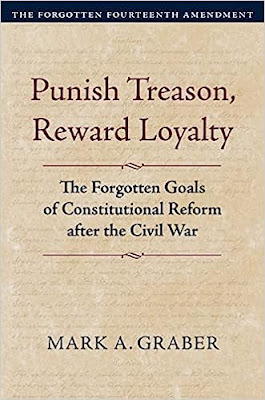
Mark A. Graber, Punish Treason, Reward Loyalty: The Forgotten Goals of Constitutional Reform after the Civil War (University of Kansas Press, 2023)
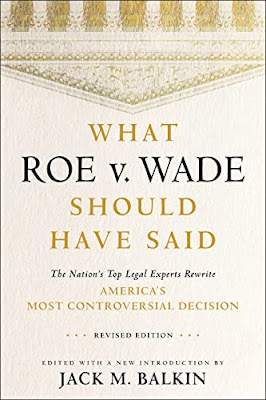
Jack M. Balkin, What Roe v. Wade Should Have Said: The Nation's Top Legal Experts Rewrite America's Most Controversial Decision - Revised Edition (NYU Press, 2023)

Andrew Koppelman, Burning Down the House: How Libertarian Philosophy Was Corrupted by Delusion and Greed (St. Martin’s Press, 2022)

Gerard N. Magliocca, Washington's Heir: The Life of Justice Bushrod Washington (Oxford University Press, 2022)
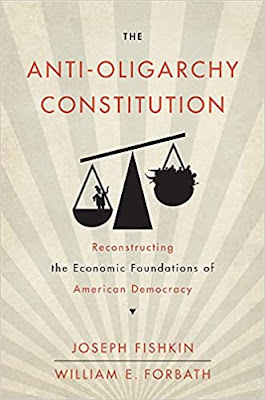
Joseph Fishkin and William E. Forbath, The Anti-Oligarchy Constitution: Reconstructing the Economic Foundations of American Democracy (Harvard University Press, 2022)

Mark Tushnet and Bojan Bugaric, Power to the People: Constitutionalism in the Age of Populism (Oxford University Press 2021).

Mark Philip Bradley and Mary L. Dudziak, eds., Making the Forever War: Marilyn B. Young on the Culture and Politics of American Militarism Culture and Politics in the Cold War and Beyond (University of Massachusetts Press, 2021).

Jack M. Balkin, What Obergefell v. Hodges Should Have Said: The Nation's Top Legal Experts Rewrite America's Same-Sex Marriage Decision (Yale University Press, 2020)

Frank Pasquale, New Laws of Robotics: Defending Human Expertise in the Age of AI (Belknap Press, 2020)

Jack M. Balkin, The Cycles of Constitutional Time (Oxford University Press, 2020)

Mark Tushnet, Taking Back the Constitution: Activist Judges and the Next Age of American Law (Yale University Press 2020).

Andrew Koppelman, Gay Rights vs. Religious Liberty?: The Unnecessary Conflict (Oxford University Press, 2020)

Ezekiel J Emanuel and Abbe R. Gluck, The Trillion Dollar Revolution: How the Affordable Care Act Transformed Politics, Law, and Health Care in America (PublicAffairs, 2020)

Linda C. McClain, Who's the Bigot?: Learning from Conflicts over Marriage and Civil Rights Law (Oxford University Press, 2020)
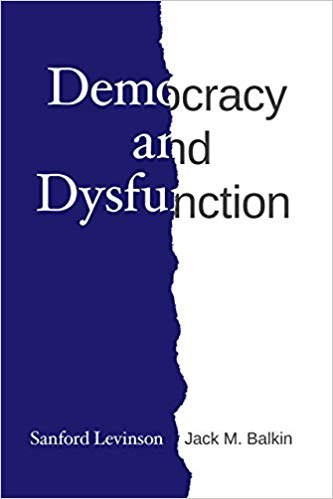
Sanford Levinson and Jack M. Balkin, Democracy and Dysfunction (University of Chicago Press, 2019)

Sanford Levinson, Written in Stone: Public Monuments in Changing Societies (Duke University Press 2018)

Mark A. Graber, Sanford Levinson, and Mark Tushnet, eds., Constitutional Democracy in Crisis? (Oxford University Press 2018)

Gerard Magliocca, The Heart of the Constitution: How the Bill of Rights became the Bill of Rights (Oxford University Press, 2018)

Cynthia Levinson and Sanford Levinson, Fault Lines in the Constitution: The Framers, Their Fights, and the Flaws that Affect Us Today (Peachtree Publishers, 2017)

Brian Z. Tamanaha, A Realistic Theory of Law (Cambridge University Press 2017)

Sanford Levinson, Nullification and Secession in Modern Constitutional Thought (University Press of Kansas 2016)

Sanford Levinson, An Argument Open to All: Reading The Federalist in the 21st Century (Yale University Press 2015)

Stephen M. Griffin, Broken Trust: Dysfunctional Government and Constitutional Reform (University Press of Kansas, 2015)

Frank Pasquale, The Black Box Society: The Secret Algorithms That Control Money and Information (Harvard University Press, 2015)

Bruce Ackerman, We the People, Volume 3: The Civil Rights Revolution (Harvard University Press, 2014)
Balkinization Symposium on We the People, Volume 3: The Civil Rights Revolution

Joseph Fishkin, Bottlenecks: A New Theory of Equal Opportunity (Oxford University Press, 2014)

Mark A. Graber, A New Introduction to American Constitutionalism (Oxford University Press, 2013)

John Mikhail, Elements of Moral Cognition: Rawls' Linguistic Analogy and the Cognitive Science of Moral and Legal Judgment (Cambridge University Press, 2013)

Gerard N. Magliocca, American Founding Son: John Bingham and the Invention of the Fourteenth Amendment (New York University Press, 2013)

Stephen M. Griffin, Long Wars and the Constitution (Harvard University Press, 2013)

Andrew Koppelman, The Tough Luck Constitution and the Assault on Health Care Reform (Oxford University Press, 2013)

James E. Fleming and Linda C. McClain, Ordered Liberty: Rights, Responsibilities, and Virtues (Harvard University Press, 2013)
Balkinization Symposium on Ordered Liberty: Rights, Responsibilities, and Virtues

Andrew Koppelman, Defending American Religious Neutrality (Harvard University Press, 2013)

Brian Z. Tamanaha, Failing Law Schools (University of Chicago Press, 2012)

Sanford Levinson, Framed: America's 51 Constitutions and the Crisis of Governance (Oxford University Press, 2012)

Linda C. McClain and Joanna L. Grossman, Gender Equality: Dimensions of Women's Equal Citizenship (Cambridge University Press, 2012)

Mary Dudziak, War Time: An Idea, Its History, Its Consequences (Oxford University Press, 2012)

Jack M. Balkin, Living Originalism (Harvard University Press, 2011)

Jason Mazzone, Copyfraud and Other Abuses of Intellectual Property Law (Stanford University Press, 2011)

Richard W. Garnett and Andrew Koppelman, First Amendment Stories, (Foundation Press 2011)

Jack M. Balkin, Constitutional Redemption: Political Faith in an Unjust World (Harvard University Press, 2011)

Gerard Magliocca, The Tragedy of William Jennings Bryan: Constitutional Law and the Politics of Backlash (Yale University Press, 2011)

Bernard Harcourt, The Illusion of Free Markets: Punishment and the Myth of Natural Order (Harvard University Press, 2010)

Bruce Ackerman, The Decline and Fall of the American Republic (Harvard University Press, 2010)
Balkinization Symposium on The Decline and Fall of the American Republic

Ian Ayres. Carrots and Sticks: Unlock the Power of Incentives to Get Things Done (Bantam Books, 2010)

Mark Tushnet, Why the Constitution Matters (Yale University Press 2010)
Ian Ayres and Barry Nalebuff: Lifecycle Investing: A New, Safe, and Audacious Way to Improve the Performance of Your Retirement Portfolio (Basic Books, 2010)
.jpg)
Jack M. Balkin, The Laws of Change: I Ching and the Philosophy of Life (2d Edition, Sybil Creek Press 2009)

Brian Z. Tamanaha, Beyond the Formalist-Realist Divide: The Role of Politics in Judging (Princeton University Press 2009)
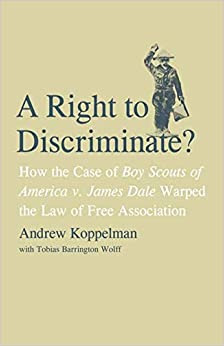
Andrew Koppelman and Tobias Barrington Wolff, A Right to Discriminate?: How the Case of Boy Scouts of America v. James Dale Warped the Law of Free Association (Yale University Press 2009)

Jack M. Balkin and Reva B. Siegel, The Constitution in 2020 (Oxford University Press 2009)
Heather K. Gerken, The Democracy Index: Why Our Election System Is Failing and How to Fix It (Princeton University Press 2009)

Mary Dudziak, Exporting American Dreams: Thurgood Marshall's African Journey (Oxford University Press 2008)

David Luban, Legal Ethics and Human Dignity (Cambridge Univ. Press 2007)

Ian Ayres, Super Crunchers: Why Thinking-By-Numbers is the New Way to be Smart (Bantam 2007)

Jack M. Balkin, James Grimmelmann, Eddan Katz, Nimrod Kozlovski, Shlomit Wagman and Tal Zarsky, eds., Cybercrime: Digital Cops in a Networked Environment (N.Y.U. Press 2007)

Jack M. Balkin and Beth Simone Noveck, The State of Play: Law, Games, and Virtual Worlds (N.Y.U. Press 2006)

Andrew Koppelman, Same Sex, Different States: When Same-Sex Marriages Cross State Lines (Yale University Press 2006)
Brian Tamanaha, Law as a Means to an End (Cambridge University Press 2006)
Sanford Levinson, Our Undemocratic Constitution (Oxford University Press 2006)
Mark Graber, Dred Scott and the Problem of Constitutional Evil (Cambridge University Press 2006)
Jack M. Balkin, ed., What Roe v. Wade Should Have Said (N.Y.U. Press 2005)
Sanford Levinson, ed., Torture: A Collection (Oxford University Press 2004)
Balkin.com homepage
Bibliography
Conlaw.net
Cultural Software
Writings
Opeds
The Information Society Project
BrownvBoard.com
Useful Links
Syllabi and Exams